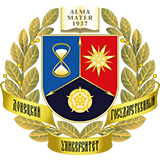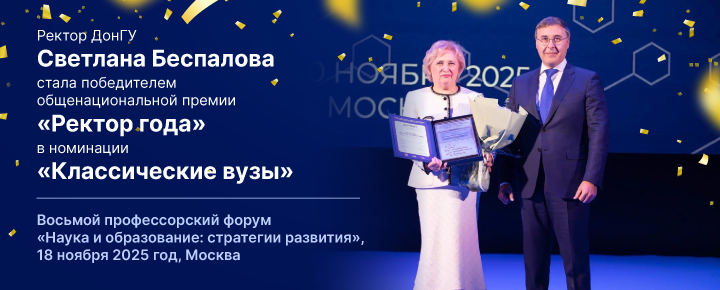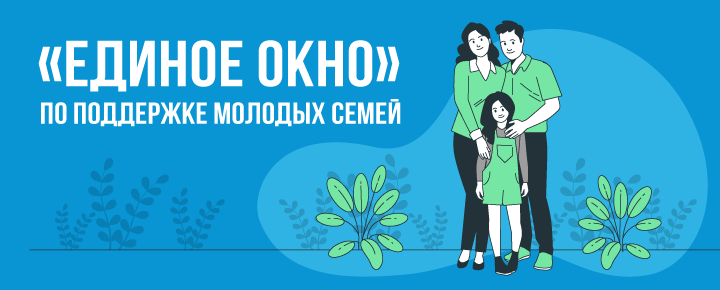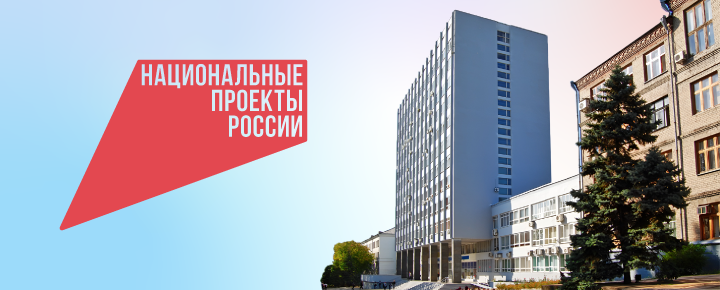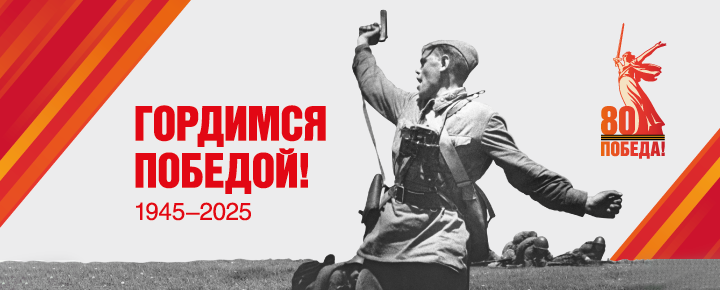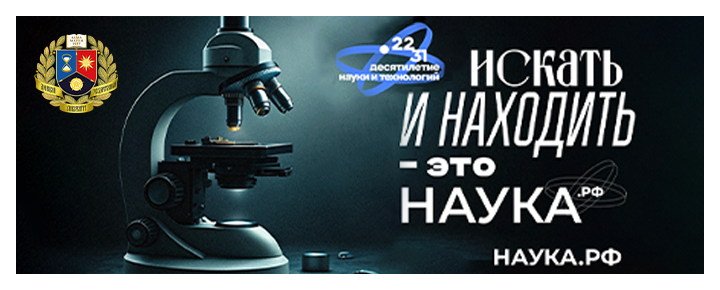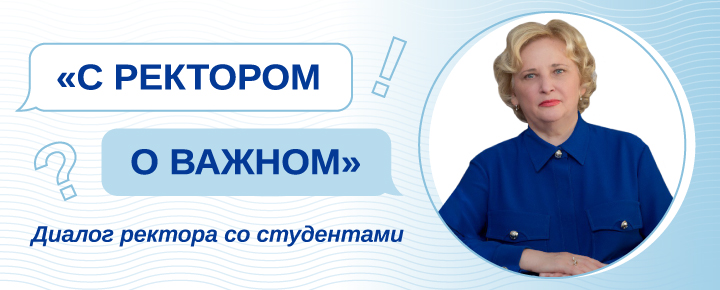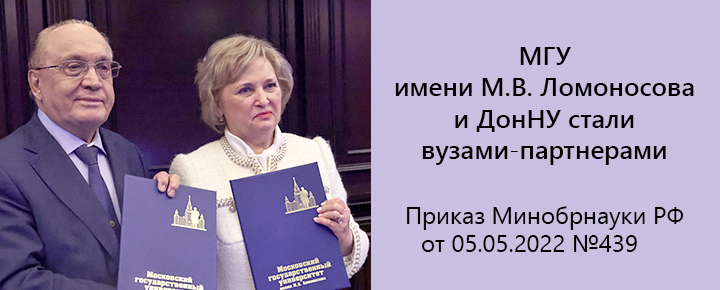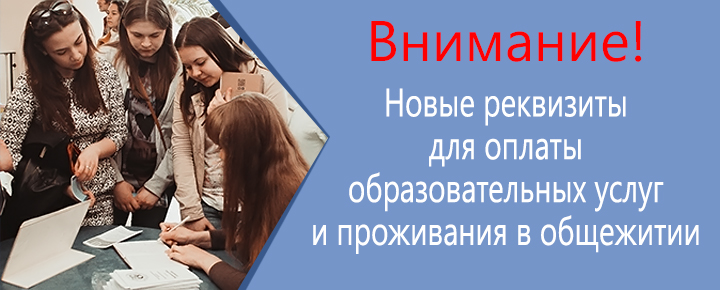RULES FOR AUTHORS
1. For publication in the journal "Bulletin of Donetsk National University. Series D: Philology and Psychology" original scientific papers containing the results of research related to the following branches of science are accepted:
5.9. Philology:
5.9.1. Russian literature and literature of the peoples of the Russian Federation;
5.9.3. Theory of literature;
5.9.5. Russian language. Languages of the peoples of Russia;
5.9.6. Languages of the peoples of foreign countries;
5.9.8. Theoretical, applied and comparative linguistics;
5.9.9. Media communications and journalism.
5.3. Psychology:
5.3.1. General psychology, personality psychology, history of psychology;
5.3.5. Social psychology, political and economic psychology.
2. Articles published earlier in other journals, as well as articles that do not meet editorial requirements or the subject of the journal, are not accepted for consideration. The journal publishes exclusively relevant materials written in the year of submission to the editorial board.
3. The decision on publication is made by the editorial board of the journal after reviewing. If the review is positive, but contains comments and suggestions, the editorial board sends the article to the authors for revision along with the comments of the reviewer. The author must respond to the reviewer on all points of the review. After such revision, the editorial board decides on the publication of the article. In case of rejection of the article, the editorial board sends the authors either reviews or excerpts from them, or a reasoned letter from the editor. The Editorial Board does not enter into a discussion with the authors of rejected articles, except in cases of obvious misunderstanding. An article delayed for more than three months or requiring re-processing is considered as newly received. The editorial board reserves the right to carry out editorial editing of texts. The proofreading of the articles is not sent to the authors.
4. The editorial board does not charge the authors for the preparation, placement and printing of materials.
5. To the addresses of the editorial board (vi.terkulov@mail.ru, v.korobova-latyntseva@mail.ru) the following documents are sent as attachments to the letter:
5.1. The electronic text of the article (in WORD or RTF format and in parallel in pdf format), not exceeding the range of 7-15 pages (from 20,000 to 40,000 characters). The list of references, the list of sources, references, information about the author and the translation of the abstract are not included in the volume of the research text. The name of the electronic text file of the article: "(Last name of the author)_article", for example, "Дьякова_статья ".
5.2. Text for the table of contents. The surname and initials of the author, as well as the title of the article in Russian and English, are submitted in a separate file and on a separate sheet. In this case, the surname and initials of the author are typed in italics with an indissoluble space and with a sparse inter-letter interval (3 pt). A dot is not placed at the end of the text (the file name is "(Author's last name) for the title", for example, "Дьякова_для_оглавления").
Sample:
Дьякова Т.А. Историзмы как лингвистические реалии с социокультурным компонентом в текстовом пространстве Михаила Матусовского
Diakova T.A. Historicisms as Linguistic Realias with Sociocultural Component in Works by Mikhail Matusovsky
5.3. Consent to data processing (sent to the author after acceptance of the article for publication).
6. ATTENTION! MANDATORY REQUIREMENTS FOR THE FORMATION OF ARTICLES:
1. The main text of the article is in Times New Roman font, size 12 pt., justified;
2. Abstract, list of references, tables, captions, information about the authors – Times New Roman font, size 10 pt.
3. Mirror fields: top – 20 mm, bottom – 25 mm, left – 30 mm, right – 20 mm. Line spacing is single.
4. Paragraph indent – 1 cm.
5. The text is typed without automatic hyphenation (width alignment);
6. In the text, italics, bold, spacing (but not underlining) are allowed. To highlight examples in the text, only italics are used, for example: The word adjective is a substantiated adjective. If it is necessary to highlight examples within the sentence typed in italics, as well as to focus on some of the examples, use bold italics: I erected a monument to myself not made by hands; words of the state category: good, you can, it's time;
7. For titles of works, "angular" quotation marks are used: "War and Peace";
8. Quoting, direct speech, etc. are formatted with angular quotes of the form "..."; if necessary, use quotation marks inside the quotation, external ones should be "angular" quotation marks: "..."..."...";
9. It is necessary to use the dash (-) and hyphen (-) correctly; the difference lies in the size and the presence of spaces before and after the dash: Zhukovsky is a romantic poet; the first sign is punctuation, the second is spelling;
10. To designate page, time and other intervals, a dash not separated by spaces from adjacent characters is used: p. 24–26;
11. If poetic texts are printed as an inclusion in the text, then the verses are separated by a slash, and the stanzas by two slashes:
You wanted it. – So. – Hallelujah. / I kiss the hand that beats me. // Into the chest that pushed away – I pull to the chest, / So that, surprised, I listened to the silence. (M. Tsvetaeva. Nailed...);
12. If the verses are reproduced in compliance with the strophic design, then the following parameters must be used: font size – 12, single line spacing, paragraph indentation – 4 cm:
В нем пунша и войны кипит всегдашний жар,
На Марсовых полях он грозный был воитель.
Друзьям он верный друг, красавицам мучитель,
всюду он гусар.
13. Non-breaking space (Ctrl+Shift+space) must be used:
a. between initials and surname (no space is used between the initials of the name and patronymic): V.I. Suprun, Suprun V.I., V. Suprun, Suprun V.
b. after the "s." (page) before the page number (page spacing): in the text of the article – p. 212, p. 212–218; in the bibliographic description – pp. 212–218;
c. after indicating the number of pages in the bibliographic description: 418 c.;
in combinations и т.д., и т.п.
7. The text of the manuscript should be constructed according to the following scheme:
- In front of the UDC, a separate line on the left indicates the type of article, for example: Scientific article, Review article, Short message, Review, etc.
- UDC index in the upper-left corner of the page (without paragraph indentation and without highlighting).
- DOI text: (the DOI index is assigned by the editorial board).
- THE TITLE of the article is bold, centered (in capital letters without hyphenation); if it is necessary to give thanks or an indication of the source of funding for the article, this is done in a footnote to the title.
- Separated by a line: copyright © , year (no dot after the year) (bold), (three spaces), initials and last name (surnames)
- On the next line: the official name of the organization (italics).
- On the next line is the author's ORCID.
- In a line: an abstract in Russian (10 points) of at least 100 and no more than 150 words, which should briefly reflect the problem, methods, material and main results of the study. Keywords: (this phrase is in bold italics) (8-15 words).
- Through the line: For citation (10 points, in accordance with GOST 7.1-2003 "Bibliographic record. Bibliographic description" and GOST7.05-2008 "Bibliographic reference").
Sample design of the beginning of the article:
Научная статья
УДК 81:112
DOI:
ИСТОРИЗМЫ КАК ЛИНГВИСТИЧЕСКИЕ РЕАЛИИ С СОЦИОКУЛЬТУРНЫМ КОМПОНЕНТОМ В ТЕКСТОВОМ ПРОСТРАНСТВЕ МИХАИЛА МАТУСОВСКОГО
© 2024 Т.А. Дьякова
ФГБОУ ВО «Луганская государственная академия культуры и искусств имени М. Матусовского»
ORCID 0000-0002-8440-7806.
В работе рассматриваются историзмы из произведений М. Матусовского, представляющие интерес как источники социокультурной информации. Актуальность исследования обусловлена необходимостью изучения этого слоя словаря писателя для адекватного восприятия культурно-исторических, социально-бытовых аспектов литературных произведений, отражающих различные периоды развития общества. В процессе исследования текстов применялись различные методы и приемы: анализ и синтез, сплошная выборка единиц определенной группы, культурологический, этимологический, исторический комментарий. Историзмы, использованные писателем, объединены для анализа в несколько групп: одежда и ее детали; приборы, технические средства; музыкальные инструменты и звуковоспроизводящие аппараты; осветительные приборы и приспособления; ткани и др. Сделаны выводы о целях использования устаревших слов. В текстах они служат для создания культурно-исторического и социально-бытового колорита, обеспечения эмоционально-экспрессивного фона повествования. Историзмы применяются как детали портретных характеристик персонажей, используются как художественные средства выразительности.
Ключевые слова: историзм, социокультурный компонент, лексема, лингвистическая реалия, культурно-исторический колорит, социально-бытовой колорит, портретная характеристика.
Для цитирования: Дьякова Т.А. Историзмы как лингвистические реалии с социокультурным компонентом в текстовом пространстве Михаила Матусовского / Т.А. Дьякова // Вестник Донецкого национального университета. Серия Д. Филология и психология. – 202Х. – № Х. – С. ХХ-ХХ.
The Borders tool is used to create separating lines.
- A line apart is the text of the article (12 points), which includes the introduction, the main part and the conclusion. Each of these sections should be titled (not italics, bold).
Introduction. The formulation of the problem in general and the connection with the most important scientific and practical tasks, a brief analysis of recent studies and publications in which the solution of this problem has been initiated and on which the author relies, the identification of previously unresolved parts of the general problem to which the article is devoted, the formulation of the purpose and objectives of the article.
Materials and methods of research. A description of the materials used, indicating their exact characteristics, including quantitative and statistical ones, substantiating the representativeness of the sample; a description of research methods with a description of their significant tools and procedures.
The main part. The main research materials with a full justification of the scientific results obtained; as a rule, it contains the following structural elements: problem statement, presentation of the solution path, analysis of the results.
Conclusion. The statement of the solution of the tasks set in the introduction, the prospects for further research in this direction.
A LIST OF REFERENCES AND A LIST OF SOURCES (10 points without paragraph indentation). The list of references is considered to be a list of scientific works referred to by the author, and the List of sources is a list of sources of illustrative material (dictionaries, sources of examples: works of art, media texts, texts from the national corpus of the Russian language, etc.). The list of sources is given only if the text contains examples from dictionaries, the national corpus Russian language, works of fiction, etc.
The list of references and the list of sources are given in a general list (with end–to–end numbering) after the Conclusion in alphabetical order in the original language (first - works in Russian, then in foreign languages) in accordance with GOST 7.1-2003 "Bibliographic record. Bibliographic description" and GOST7.05-2008 "Bibliographic reference". In all cases where the cited material has a DOI, it must be indicated at the very end of the bibliographic reference.
The reference to the source is given in the text in square brackets and is drawn up according to the model [number in the list of references, comma, page]: [4, p. 23].
References are allowed only to published works.
It is necessary to include in the list as many fresh primary sources on the issue under study as possible (no more than three or four years ago). One should not limit oneself to quoting works belonging to only one group of authors or a research group. Links to modern foreign publications are desirable. No more than two references to the work of the author of the article are considered correct.
The minimum number of sources in the list of references, which must necessarily be referenced in the text of the article, is 10.
Phrases LIST OF REFERENCES and LIST OF SOURCES (Bold) aligned to the left without a paragraph:
СПИСОК ЛИТЕРАТУРЫ
- Арсеньева М. Г. О тождестве слова / М. Г. Арсеньева, Т. В. Строева, А. П. Хазанович // Научные доклады высшей школы: филологические науки. – 1965. – № 2. – С. 59-68.
- Арутюнова Н.Д. Метафора и дискурс / Н.Д. Арутюнова // Теория метафоры. – М.: Наука, 1990. – С. 5–33.
- Белозерова Е.В. Текстовые реализации лингвокультурных концептов / Е.В. Белозерова // Профессиональная коммуникация: проблемы гуманитарных наук : [сб. науч. тр.]. – Волгоград : ВГСХА, 2005. – Вып. 1. Филология, лингвистика, лингводидактика. – С. 10–17.
- Богданова Е.А. Лексика свадебного обряда в воронежских говорах : этнолингвистический аспект : дисс. канд. филол. наук : 10.02.01 Русский язык / Богданова Елена Александровна ; ВГУ. – Воронеж, 2019. – 324 с.
- Леонтьев А.А. Психолингвистические особенности языка СМИ [Электронный ресурс] / А.А. Леонтьев. – Режим доступа: http: www.genhis.philol.msu.ru/article_286.shtml (дата обращения: 25.10.2024).
- Магера Т.С. Текст политического плаката: лингвориторическое моделирование (на материале региональных предвыборных плакатов): автореф. дисс. ... канд. филол. наук : спец. 10.02.01 «Русский язык» / Т.С. Магера. – Барнаул, 2005. – 18 с.
- Николаева Т.А. Социокультурный аспект гендерной маркированности якутских фразеологизмов / Т.А. Николаева, Л.М. Готовцева // Томский журнал лингвистических и антропологических исследований. – 2024. – Вып. 1 (43). – С. 20-31. – http://doi.org/10.23951/2307-6119-2024-1-20-31.
- Теркулов В.И. Парадигматика сложносокращённого слова как средство прогнозирования эквивалентностных отношений / В.И. Теркулов // Русистика. – 2023. – Т. 21. № 1. – С. 79–96. – http://doi.org/10.22363/2618-8163-2023-21-1-79-96.
СПИСОК ИСТОЧНИКОВ
- Ипатова О. Золотая жрица Ашвинов О. Ипатова / О. Ипатова // Ольгердово копье: романы. – Минск: Беллитфонд, 2002. – С. 3–299.
- Словарь русских народных говоров. Вып. 8. Дер–Ерепениться / Гл. ред. Ф.П. Филин. – Л. : Наука, Ленинградское отд., 1972. – 370 с.
After the List of Sources or the List of References (if there is no list of sources), a list of References is given, which uses the APA format with mandatory transliteration and translation of Cyrillic names (except for the names of periodicals). The word REFERENCES (Bold) is aligned to the left without a paragraph. If the article is submitted in English, then the list of references is immediately executed in the ARA format. Only the References section should be duplicated. For publications with DOI, you must specify the appropriate link.
Titles of publications in a language that uses a non-Latin alphabet (for example, Cyrillic) must be transliterated and translated into English, while the transliteration of the original title is used as the main title, and the English translation is given in square brackets immediately after it. Design examples:
REFERENCES
- Abaev, V. I. (1979). Skifo-sarmatskie narechiia [Scytho-Sarmatian languages]. In V. S. Rastorgueva (Ed.), Osnovy iranskogo iazykoznaniia. Drevneiranskie iazyki [Elements of Iranian Linguistics. Ancient Iranian Languages] (pp. 272–346). Moscow: Nauka. (In Russian)
- Berezovich, E. L. (2007). Iazyk i traditsionnaia kul'tura: etnolingvisticheskie issledovaniia [Language and Traditional Culture: Ethnolinguistic Studies]. Moscow: Indrik. (In Russian)
- Blasco Ferrer, E. (1993). Tracce indeuropee nella Sardegna nuragica? [Indo-European Traces in Nuragic Sardinia?]. Indogermanische Forschungen, 98, 177–185. http://doi.org/10.1515/9783110243390.177 (In Italian)
Sprache [Electronic Dictionary of the German Language]. Retrieved from http://www.dwds.de/. (In German).
- Gammeltoft, P. (2005). Islands Great and Small: A Brief Survey of the Names of Islands and Skerries in Shetland. In P. Gammeltoft, C. Hough & D. Waugh (Eds.), Cultural Contacts in the North Atlantic Region: The Evidence of Names (pp. 119–126). Lerwick: NORNA.
- Harvalík, M. (2004). Synchronní a diachronní aspekty české onymie [Synchronic and Diachronic Aspects of Czech Proper Names]. Praha: Academia. (In Czech).
- Kleiber, G. (1992). Quand le nom propre prend l’article: le cas des noms propres métonymiques [When A Proper Name Takes An Article: The Case of Metonymic Proper Names]. Journal of French Language Studies, 2, 185–205. (In French).
- Koznetsov, S. A. (Ed.). (2000). Bol'shoi tolkovyi slovar' russkogo iazyka [A Great Explanatory Dictionary of the Russian Language]. Saint Petersburg: Norint. (In Russian).
- Lysova, E. V. (2002). Ornitonimiia Russkogo Severa [Ornithonymy of the Russian North] (Doctoral dissertation). Ural State University, Ekaterinburg. (In Russian).
- Pharies, D. (2002). The Origin and Development of the Spanish Suffix -azo. Romance Philology, 56 (1), 41–50. http://doi.org/10.1484/J.RPH.2.304495 (In English).
- Room, A. (1988). Bloomsbury Dictionary of Place-Names in the British Isles. London: Bloomsbury.
- Zaliznyak, A. A., & Yanin, V. L. (2003). Berestianye gramoty iz novgorodskikh raskopok 2002 g. [Birch Bark Manuscripts from Novgorod Excavations in 2000]. Voprosy yazykoznaniya, 4, 3–11. (In Russian).
After italics (10 points, alignment on the right side), an entry is made: Received by the editorial office xx.xx.20xx.
The following is an abstract in English (10 points), including:
- the title of the article (bold – centered alignment),
- through the line: initials and surname of the author(s) (bold italics – left alignment, without a paragraph),
- through the line: abstract, keywords (phrase Key words: – bold italics) – width alignment, with a paragraph of 1 cm.
HISTORICISMS AS LINGUISTIC REALIAS WITH SOCIOCULTURAL COMPONENT
IN WORKS BY MIKHAIL MATUSOVSKY
T.A. Diakova
The work examines historicisms from the works of M. Matusovsky as linguistic realias with a socio-cultural component. The historicisms used by the writer are classified into several groups: clothes and their parts; devices, hardware and apparatus; musical instruments and sound reproducing apparatus; lighting devices and gear; fabrics. Conclusions about the purposes of using historical lexemes are drawn. In the texts, they serve to create a cultural, historical and social atmosphere, to convey the temporal and local characteristics of the described epoch, to provide the narrative emotionally expressive background. Historicisms are used as means of character drawing and function as various tropes.
Key words: historicism, socio-cultural component, lexeme, linguistic realia, cultural and historical atmosphere, social and everyday atmosphere, portrait characteristic.
At the end of the article, the following information about the authors (for each author – a separate line) must be indicated in parallel in the table in Russian and English (10 points, left alignment, without paragraph indentation):
o Surname, first name, patronymic in full (bold);
o Academic degree and title (without distinction).
o The full name of the organization – the place of work of each author, country, city.
o Position (without allocation).
o ORCHID
o Email address.
A dot is placed at the end of each line.
Sample:
|
Дьякова Татьяна Алексеевна. |
Diakova Tatiana Alekseevna. |
8. Students, undergraduates, postgraduates and applicants submit a review of the supervisor together with the article.
9. Authors of scientific articles are personally responsible for the presence of plagiarism elements in the texts of articles, as well as for the content and reliability of facts, quotations, proper names and other information.
10. Contact information:
283001, Donetsk, Universitetskaya str., 24, 1st building, Faculty of Philology (rooms 451, 452).
Editor-in-Chief: Vyacheslav Isayevich Terkulov, Doctor of Philology, Professor, Head of the Russian Language Department at Donetsk State University (E-mail: vi.terkulov@mail.ru).
Executive Secretary: Wildgrube Svetlana Alexandrovna, PhD. Psychology, Associate Professor of the Department of Psychology of Donnu (E-mail: s.vildgrube@mail.ru).
Technical Secretary: Korobova-Latyntseva Victoria Sergeevna, lecturer at the Department of Russian Language of the Don (E-mail: v.korobova-latyntseva@mail.ru)

